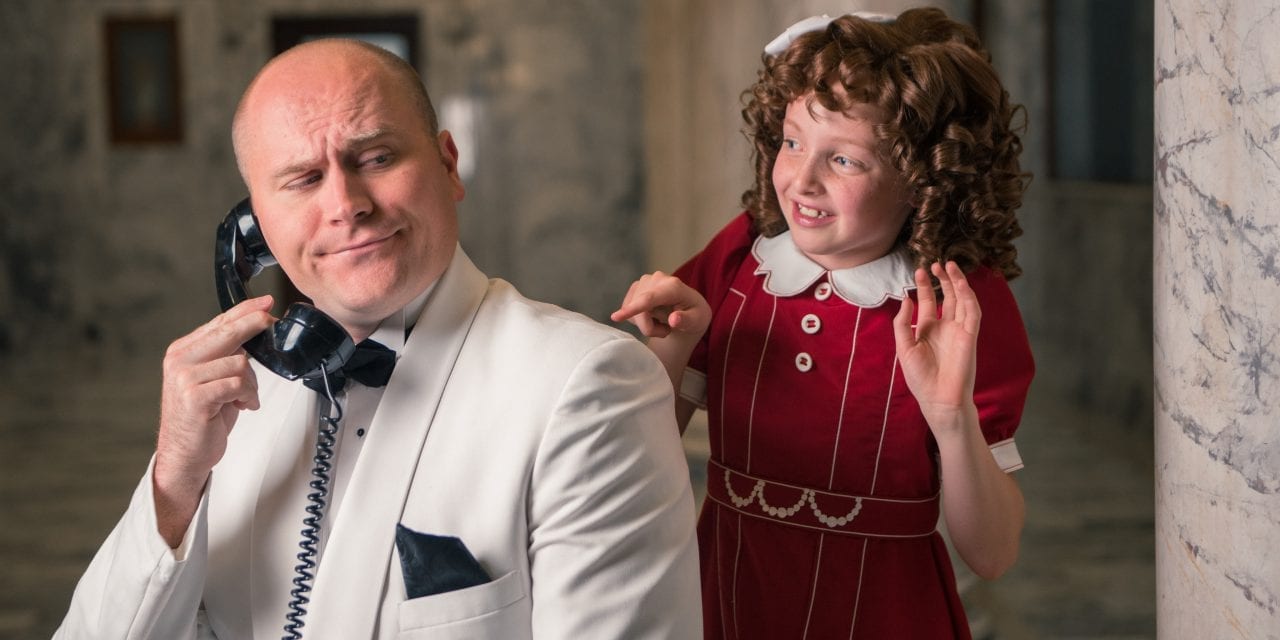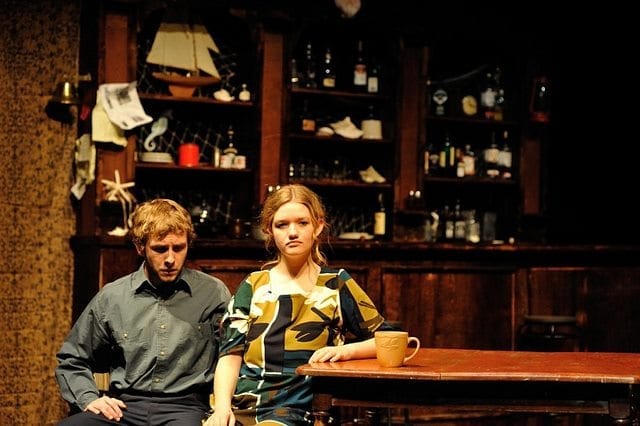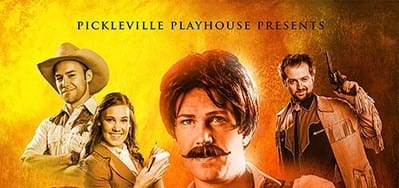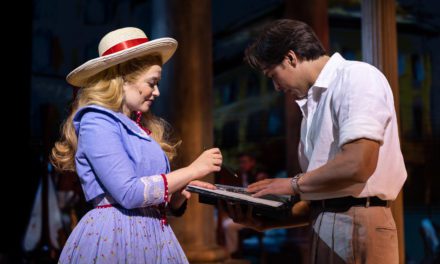OREM — My biggest worry as I write about Hale Center Theater Orem’s Annie is that I will run out of synonyms for “good” as I describe this production. Perhaps because I had never seen the show on stage before, I was unprepared for the barrage of delightful scenes, entertaining dances, and superb performances in this production.

Show closes August 11, 2018.
Annie tells the story of an eternally optimistic orphan girl who spends Christmas with the wealthy billionaire Oliver Warbucks. After she spends a week in his home, Warbucks decides to adopt Annie, but not before searching for her birth parents.
David Morgan‘s direction of this production was absolute perfection. Whether it was the grittiness of Hooverville, or the organized chaos of busy New York City streets, Morgan was excellent at establishing the right mood for every scene. His staging for the radio station scene was full of little bits of stage business that added layers of humor and character, even when the actors weren’t speaking. Indeed, I cannot imagine any way to improve upon Morgan’s directing in any scene.
Morgan had the help of a top-notch design team that created the entire range of the American socioeconomic scale in the 1930’s. Most instrumental to this were Kris Hansen-Call‘s costume designs. From the tattered and patched orphan girls’ nightgowns in the opening scene, to the opulent suits and stylish dresses of Warbucks and his secretary, every costume was pleasing to look at while also conveying important information about each character. The Hooverville costumes were grimy and added a bit of drab realism to the otherwise bright, cheery story. And the matching servants’ costumes in Warbucks’s mansion were smart and elegant. The projections (probably created by technical director Cole McClure) were another asset to the play, especially in “N.Y.C.” and in Warbucks’s house, scenes where the projections created the illusion of space on the small Hale stage.

Madilyn Terry as Annie. Photo by Suzy Oliveria.
Madilyn Terry played Annie with nonstop appeal. In her first scene, she sang “Maybe” with confidence, and—despite her age—seemed completely comfortable performing on the stage. Terry’s performance only improved from there, and the emotional connection she made with Oliver Warbucks (played by Benjamin J. Henderson) ensured that the heart of the story was readily accessible. Henderson, for his part, was ideal for the role of Oliver Warbucks. His confident bearing and take-charge attitude made him convincing as a billionaire tycoon. Henderson infused life and realism into his character. This was especially apparent in the second act, where Henderson showed his character’s heart open up, which made the following scenes where he connects with Annie much more believable. I also appreciated how Henderson’s rendition of “N.Y.C.” sounded like a love letter to the city.
Another memorable performer in the cast was Bonnie Wilson Whitlock as Miss Hannigan. Her lanky frame and expressive face made her dancing in “Easy Street” and “Little Girls” visually appealing. Like Henderson, Whitlock also avoided playing a caricature, and it was nice that Whitlock made Miss Hannigan’s alcoholism a legitimate coping mechanism, instead of a cheap laugh.
The Annie ensemble and other supporting actors were all splendid, and I apologize now for not naming every cast member who impressed me. Jessica Pearce (as Grace Farrell) and Wade Robert Johnson (as Rooster) were fun to watch as they plotted to defraud Warbucks of his money, and their brassy performance of “Easy Street” (with Whitlock) was so wonderful that I started hoping that these devious antagonists would succeed in their scheme. The adult ensemble all played multiple roles, and every actors moved in and out of their different roles with ease. JD Ramey was a funny as Bert Healy, the smarmy and radio announcer that could turn off and on his on-air persona at will. The quiet performance of Shawn Lynn as Drake (the head butler) was formal and yet whimsical, and I couldn’t get enough of his daffy mannerisms.
But the real charmers of this production were the children’s ensemble, which consisted of six young female actresses playing the orphans. Their passion during “Hard Knock Life” injected vigor and life into the show and provided for a strong opening for the production, thanks to the precision with which they executed Ashley Gardner Carlson‘s choreography. Finally, Kelsey Plewe (playing Molly) frequently stole the scene because she was so cute and because she could match the talent of her fellow actors, despite being the youngest actor in the show.
It’s embarrassing how much a hardened 30-something-year-old critic could enjoy the Orem Hale’s production of Annie. This show is brimming with so much optimistic that it disarmed my cynicism and filled me with hope for “Tomorrow,” even during these turbulent times. Annie is the ideal family outing, but also the perfect antidote for adult cynicism.
Donate to Utah Theatre Bloggers Association today and help support theatre criticism in Utah. Our staff work hard to be an independent voice in our arts community. Currently, our goal is to pay our reviewers and editors. UTBA is a non-profit organization, and your donation is fully tax deductible.





